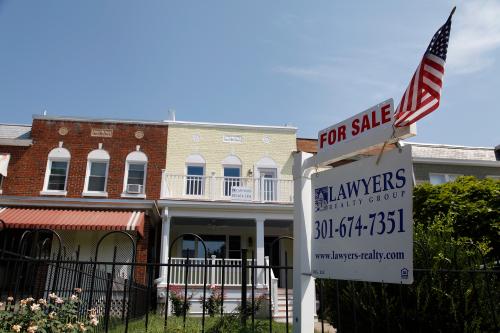This policy brief was prepared following the fall 2019 Opportunity and Inclusive Growth conference at the Federal Reserve Bank of Minneapolis. Full conference materials and video are available at https://www.minneapolisfed.org/institute/conferences.
Policymakers across the United States are searching for ways to ease the financial burden of housing expenses for local residents. In many places, housing costs have risen substantially faster than typical income growth in recent decades (Acolin and Wachter 2017; Schuetz 2019a). A typical market response to rising prices is expanded supply, but new housing construction has often been slow to materialize and expensive when finished.
This raises questions about the ability of the market to generate housing that meets the needs of a broad range of local residents. To respond to these questions, the Opportunity & Inclusive Growth Institute at the Federal Reserve Bank of Minneapolis and the Future of the Middle Class Initiative at the Brookings Institution partnered to bring together researchers and policy practitioners for a series of conversations about what we know and how to proceed. The result was a two-day conference: “Expanding and Diversifying Housing: Approaches and Impacts on Opportunity,” summarized in this brief.
Cities and states will have to address specific local needs, but three key questions, explained in more detail in the full brief, are especially salient:
1. Can new market-rate housing lower housing prices metrowide?
2. Can improving access to housing in growing areas improve outcomes for residents?
3. How can cities expand housing? What are the next steps in housing policy?
These questions suggest different avenues of research. For example, Figure 1 shows that, on average, the opening of a new market-rate building generates six or more waves of housing relocations by local residents. Few residents of the new building come from the lower-income neighborhoods (20 percent in round 1), but relocations into newly available units reach more residents of lower-income neighborhoods in each round.
 Source: Mast (2019), used by permission of the author
Source: Mast (2019), used by permission of the author
Understanding these questions and the applicable research will be key to finding effective policy solutions.
Disclaimer: This is a publication of the Opportunity & Inclusive Growth Institute at the Federal Reserve Bank of Minneapolis. The views expressed herein are those of Institute staff and others who contributed to the conference. They do not necessarily reflect the views of, and should not be attributed to, the Federal Reserve System or its Board of Governors or the Federal Reserve Banks.
The Brookings Institution is committed to quality, independence, and impact.
We are supported by a diverse array of funders. In line with our values and policies, each Brookings publication represents the sole views of its author(s).









